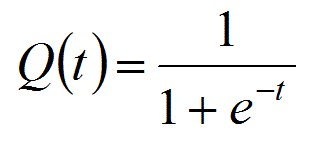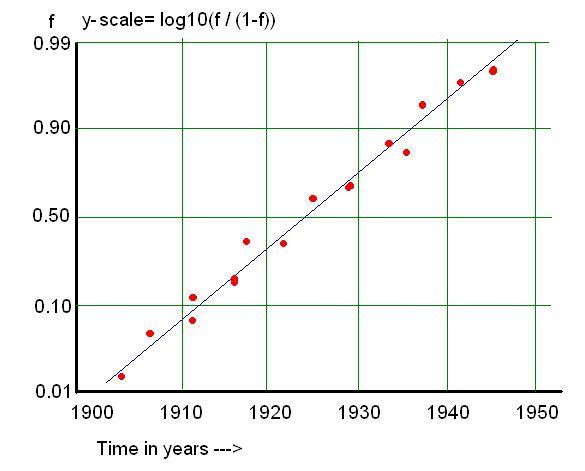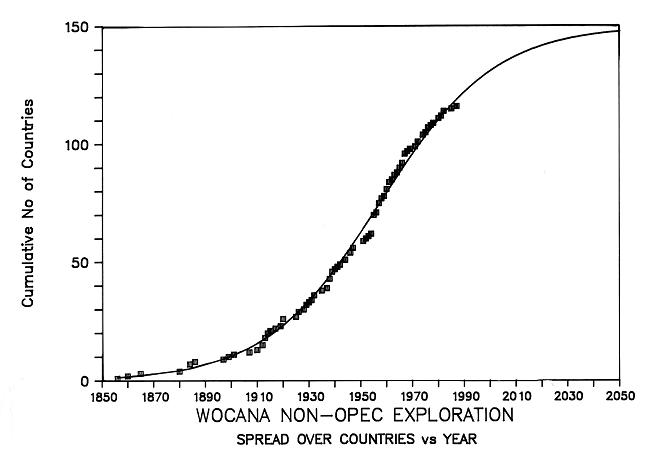Logistic function
The Logistic function was first proposed by Pierre François Verhulst (1804-1849), in 1838 in the context of population growth.
The simple form is:

Q(t) is the variable that increases with time and is a fraction bwteen 0 and 1. The variable t stands for time in most cases, but it could also be the cumulative number of wildcats drilled in an area, but expressed as a percentage of the total number of prospects. In that case Q would be the cumulative number of wildcats. The simple curve is symmetric with regard to Q= 0.5.
The logistic curve can be plotted as a straight line on semi-logarithmic paper. As this is about fractions of a total the "Q" is also often denoted as "f" for "fraction". On the Y-axis the value of f/(1-f), where f is a fraction (the variable Q in the above formula). On the horizontal axis time or some equivalent variable, such as number of exploration wells. Here is a theoretical example:

As we may not know the meaning of P, or f=1, it is interesting to try several values and see which end value corresponding to f=1 gives the best fit in the above graph. An example is the total conventional oil in the USA. If we graph the cumulative discovery as a fraction of some estimate for the total to be discovered, we would have a means of estimating the amount of undiscovered resources (see Creaming). This, of course, assuming that the discovery process in reality behaves in a simple logistic way.
Here is another example of a logistic curve. A survey was made of the times that a new country was entered for exploration as far back as was available in a database. (Basins would be more interesting than cointries, but the data are more difficult to obtain.) So the graph shows how exploration activity spread over the globe. The area was restricted to the non-OPEC countries, excluding Communist Areas and North America. Here the sigmoid shape of the curve is shown because the vertical axis is linear. Also, in this case there was little doubt about the total number of countries. The fit is remarkable.

Many planners have been using logistic curves for resource assessments, notably King Hubbert, (1956) and the Club of Rome, the latter mostly concerned with the exponential growth, which can be just the first part of the logistic process (Meadows, 1972).